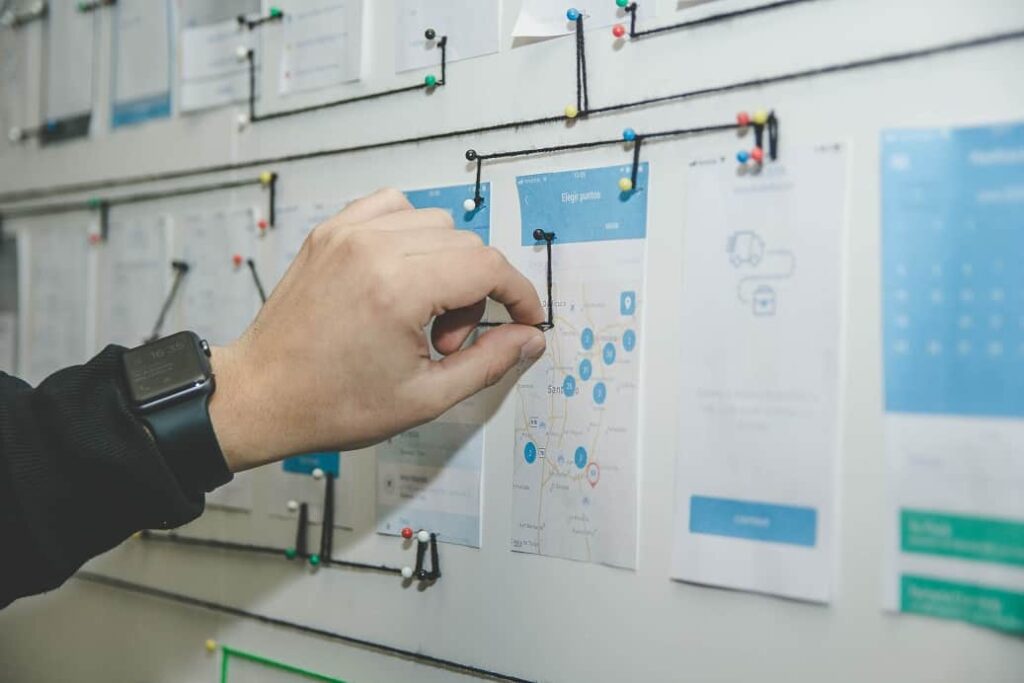What Are Some Good Time Management Skills? Best 13 Skills

In today’s article you’re going to learn everything you need to know about what are some good time management skills.
Being consistently productive can be a challenge for most people, particularly when grappling with time management issues. Fortunately, there’s a spectrum of strategies to enhance time management skills, ranging from easy adjustments to comprehensive restructuring of your daily routines. Let’s delve into diverse techniques to optimize your efficiency and achieve tasks more effectively, such as crafting an everyday agenda, minimizing distractions, and curating an optimal workspace.
What Are Some Good Time Management Skills
1. Set Clear and Attainable Weekly Objectives
Start by jotting down all of your aspirations for the week. Then, sift through your list to identify priorities, particularly tasks with impending deadlines. Setting specific and measurable goals not only keeps you focused but also boosts your sense of success upon completion.
However, it’s critical to strike a balance between ambition and realism. While it’s tempting to overload your schedule, it’s essential to set goals that are challenging yet attainable within the given timeframe. For instance, if you’re facing a significant research paper deadline, focus on completing that task rather than attempting to overhaul your living space or embark on a literary venture concurrently.
2. Craft a Structured Daily Schedule
Utilize tools like calendars or planners to map out your daily activities meticulously. Allocate time slots for each task, leaving no aspect of your day unplanned. Though adhering strictly to your schedule may not all the time be possible because of unforeseen events, having a blueprint serves as a guiding framework.
Some individuals find the tactile nature of paper timetables especially effective in keeping them organized and accountable. Experiment with different scheduling methods to discover what works best for you, whether it’s a digital calendar or a handwritten agenda.
3. Prioritize Tasks Based on Significance
Each day, identify the most vital task or the one that demands immediate attention. Assess factors such as deadlines and complexity to determine precedence levels. By tackling the most challenging assignment first, you not only build momentum but also alleviate the pressure of looming deadlines. For instance, if faced with a demanding math assignment due imminently alongside less time-sensitive vocabulary exercises, prioritize the previous to alleviate stress and ensure timely completion.
4. Embrace Singular Focus
Multitasking may look like a time-saving strategy, but it often leads to reduced efficiency and increased mental fatigue. Instead, think about one task at a time, immersing yourself fully until completion. Resist the urge to toggle between unrelated tasks, as this can fragment your attention and impede progress.
For example, dedicate a block of time solely to responding to emails before shifting focus to making phone calls. By dedicating undivided attention to each task, you optimize productivity and streamline your workflow.
5. Minimize Distractions and Create Focus Zones
Maintaining undivided focus is paramount for efficient task completion. Eliminate potential distractions such as e-mail notifications, phone calls, and social media alerts. Designate specific periods during which you’ll abstain from interruptions, guaranteeing uninterrupted workflow.
For instance, if you’ve assigned 45 minutes for writing, refrain from responding to emails or answering calls during this dedicated period. Moreover, acknowledge the allure of social media and allocate specific time slots for indulging in it, thus preventing impromptu distractions throughout the day.
6. Embrace the Power of Breaks
Recognize that sustained productivity requires periodic rejuvenation. Incorporate short breaks into your schedule to stop burnout and maintain mental acuity. Utilize these intervals to engage in activities unrelated to work, such as drawing, playing an instrument, or taking a leisurely stroll.
Additionally, consider socializing with friends, practicing meditation, or engaging in light physical exercise to rejuvenate your mind and body. By prioritizing self-care and intermittent relaxation, you improve overall productivity and sustain peak performance throughout the day.
7. Leverage the Art of Delegation
Acknowledge that you don’t must shoulder every task alone. Delegating responsibilities to capable individuals affords you the opportunity to focus on high-priority tasks without compromising efficacy.
However, exercise discernment in selecting individuals who are reliable and competent to make sure successful task completion. Recognize that delegating tasks isn’t indicative of weakness but rather a strategic utilization of resources to optimize productivity and achieve collective goals efficiently.
8. Monitor Time Allocation and Productivity Patterns
Maintain a comprehensive record of your daily activities and time expenditure using either a physical journal or a digital tracking application. Regularly review these records to gain insights into your productivity patterns and identify areas for improvement.
Be candid in documenting your activities to obtain an accurate depiction of your time allocation. Analyze trends over the course of a week to discern recurring patterns and pinpoint potential areas of inefficiency. Subsequently, adjust your schedule and habits accordingly to optimize time utilization and bolster productivity.
Additionally, acknowledge the influence of sporadic events such as social engagements or medical appointments, which may temporarily disrupt your routine, and adapt flexibly to accommodate such occurrences while striving for consistent productivity.
9. Reflect and Refine Your Task List Daily
End each day by reviewing your accomplishments and pending tasks. Acknowledge completed tasks by crossing them off your list and compile a fresh to-do list for the following day, prioritizing unfinished items. This reflective practice not only fosters a sense of success but also provides valuable insights into task duration and workload management.
Utilize this opportunity to refine your time estimates and adjust your scheduling approach accordingly. Remember, it’s natural to encounter unfinished tasks, so maintain a forward-looking perspective and strive for continuous improvement.
10. Harness the Power of Incentives
Boost your motivation by incorporating rewards into your task completion process. Prior to embarking on a task, incentivize yourself with a promised reward upon its completion. Ensure that the reward aligns with your interests and serves as a significant incentive to drive productivity.
However, exercise caution to avoid rewards that may derail your progress or undermine your goals. Opt for rewards that offer gratification without compromising your long-term objectives. For instance, treat yourself to a leisurely walk in the park upon completing a challenging writing assignment, fostering a healthy balance between work and leisure.
11. Practice Strategic Prioritization and Boundary Setting
Exercise discernment in accepting additional commitments, especially when your plate is already full. Evaluate prospective projects in light of your existing obligations, declining those that exceed your capacity to effectively manage.
Assertively communicate your constraints and limitations to others, respectfully declining opportunities that jeopardize your well-being or undermine your ability to fulfill existing commitments. Recognize that overextending yourself can lead to heightened stress levels and diminished productivity, underscoring the importance of strategic prioritization and boundary setting.
12. Optimize Downtime for Productive Reflection
Leverage moments of downtime to engage in productive reflection and planning. Whether commuting to work or waiting for an appointment, capitalize on these intervals to brainstorm ideas, organize your thoughts, or strategize upcoming tasks.
However, strike a balance between productive engagement and relaxation to stop undue stress and burnout. Allocate a portion of your downtime to organizational tasks while dedicating the rest to leisure activities or mindfulness practices. By maximizing these fleeting moments of respite, you cultivate a proactive mindset and enhance overall productivity without sacrificing much-needed relaxation.
13. Optimize Your Workspace for Enhanced Efficiency
Transforming your workspace into a productivity haven entails more than mere tidiness—it’s about creating an environment conducive to focus and creativity. Start by decluttering your desk, disposing of unnecessary items, and organizing essential supplies. A clutter-free space minimizes visual distractions, fostering a serene ambiance conducive to deep concentration. Invest in storage solutions such as folders or binders to streamline document management and maintain a neat, orderly workspace.
However, personalizing your workspace can inject a touch of inspiration and motivation into your daily routine. Consider adorning your desk with significant photographs or decor elements that evoke positive emotions. A strategically placed desk plant or a trendy pen holder can infuse personality into your space without compromising functionality. Strike a balance between functionality and personalization to create a workspace that resonates with your individual preferences and enhances overall productivity.
To enhance time management skills, it’s critical to implement a multifaceted approach that encompasses diverse strategies:
- Set Clear Goals: Define specific, measurable objectives for each week to maintain focus and motivation.
- Create a Structured Schedule: Utilize calendars or planners to allocate time for tasks, guaranteeing comprehensive planning while allowing flexibility for unforeseen events.
- Prioritize Tasks: Identify and tackle high-priority tasks first to optimize productivity and alleviate pressure.
- Maintain Singular Focus: Avoid multitasking to maximise efficiency and streamline workflow.
- Minimize Distractions: Eliminate potential interruptions such as notifications and noise, and designate uninterrupted work periods for enhanced concentration.
- Take Strategic Breaks: Incorporate short breaks to stop burnout and maintain mental clarity.
- Delegate Responsibly: Delegate tasks to capable individuals to lighten your workload and focus on essential responsibilities.
- Track Time and Productivity: Monitor time allocation and productivity patterns to identify inefficiencies and make necessary adjustments.
- Reflect Daily: Review accomplishments and pending tasks at the end of every day to refine goals and improve time estimates.
- Incentivize Progress: Motivate yourself with significant rewards upon completing tasks to maintain momentum and satisfaction.
- Practice Boundary Setting: Be realistic about commitments and learn to say no to additional projects when essential to avoid overextension and stress.
- Utilize Downtime Productively: Optimize moments of downtime for reflection, planning, and organizational tasks while balancing relaxation.
- Optimize Workspace: Create a clutter-free and personalised workspace to minimise distractions and foster a conducive environment for productivity.
By integrating these strategies into your daily routine and adapting them to your individual needs, you can cultivate effective time management skills and achieve greater efficiency and satisfaction in both professional and private endeavors.




